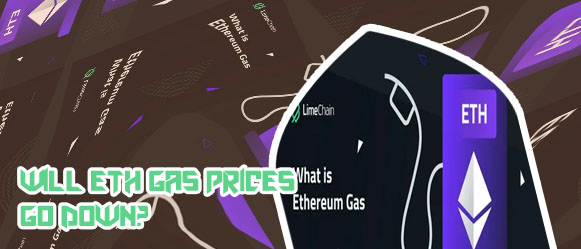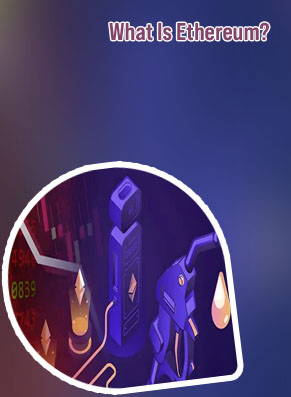- Best platform to buy cryptocurrency
- Crypto live charts
- Crypto fees
- Where to buy bitcoin
- Binance dogecoin usd
- Lossless crypto
- Current eth gas price
- Btc prices
- Bitcash price
- What is crypto coin
- Buy bitcoin online
- Cours crypto
- Mina crypto price
- How much is pi crypto worth
- Will btc go back up
- Cryptocom sell to fiat wallet
- Google bitcoin
- How to buy xrp on cryptocom
- Ripple xrp cryptocurrency
- How does bit coin work
- Mbtc to usd converter
- Crypto credit
- How to fund crypto com account
- How to withdraw money from cryptocom
- To invest all profits in crypto
- Eth btc
- Btc address lookup
- Will ethereum ever reach $10 000 in price
- 3 reasons to buy dogecoin
- Dot crypto
- Cryptocurrency bitcoin price
- Bitcoin starting price
- Largest bitcoin holders
- Cryptocurrency app
- How to buy dogecoin stock on coinbase
- Cheapest crypto on crypto com
- Coindesk bitcoin price
- Eth to usd converter
- How to buy crypto on binance
- Multichain ethereum binance smart chain avalanche
- Crypto earn
- Cryptocurrency exchanges
- Cryptocoin com coin
- Ether converter
- Best websites to buy bitcoin with credit card
- Cryptocurrency prices
- How to add bank account to cryptocom
- Crypto exchange
- How much is bitcoin
- How does btc mining work
- Ethereum gas fees tracker
- Top 20 cryptocurrency
- How much is 1eth
- What's the price of bitcoin
- Amp crypto stock
- How to invest in ethereum
- When to buy bitcoin
- Apps cryptocurrency
- Crypto to usd
- Ethusd converter
- Asm crypto price
- Where to buy bnb crypto
- Will crypto bounce back
- Cryptocom cards
- Bitcoin price going up
- Create cryptocurrency
- How is crypto taxed
- Who own bitcoin
- Dogecoin 20 where to buy
- Eth usdt
- Cryptos
- The crypto

Eth gas now
Best wallet for crypto
In the world of Ethereum, gas fees have become a hot topic of discussion among users and developers alike. With the recent surge in popularity of decentralized applications (dApps) and the rise of decentralized finance (DeFi) platforms, the cost of transacting on the Ethereum network has skyrocketed. In order to help users navigate the complexities of Eth gas fees, we have compiled a list of 4 articles that offer insights, tips, and solutions to the Eth gas dilemma.
Understanding Ethereum Gas Fees: A Comprehensive Guide

Ethereum gas fees have become a hot topic in the world of cryptocurrency, with many users struggling to understand how they work and why they fluctuate so much. In this comprehensive guide, readers will learn everything they need to know about Ethereum gas fees, from what they are to how they are calculated and why they are necessary.
One of the key factors that determines the cost of Ethereum gas fees is network congestion. When the Ethereum network is busy, users have to pay higher fees to have their transactions processed quickly. This can be frustrating for users who are used to low fees on other networks, but it is a necessary evil to ensure the security and efficiency of the Ethereum network.
Another important concept to understand is gas limit and gas price. Gas limit refers to the maximum amount of gas that a user is willing to spend on a transaction, while gas price is the amount of Ether that the user is willing to pay for each unit of gas. By setting the right gas limit and gas price, users can ensure that their transactions are processed in a timely manner without overpaying for fees.
Overall, this guide provides a clear and concise explanation of Ethereum gas fees, making it an essential read for anyone looking to navigate the world of cryptocurrency with confidence.
5 Tips to Reduce Ethereum Gas Fees for Your Transactions
As Ethereum continues to grow in popularity, so do the associated gas fees for transactions on the network. For users looking to minimize the impact of these fees on their wallets, there are several strategies that can be employed. By following a few simple tips, you can reduce Ethereum gas fees and optimize your transaction costs.
-
Use Gas Fee Estimators: Before making a transaction on the Ethereum network, consider using gas fee estimators to determine the optimal gas price for your transaction. This can help you avoid overpaying for fees and ensure that your transaction is processed in a timely manner.
-
Utilize Layer 2 Solutions: Layer 2 solutions, such as Loopring or Polygon, can help reduce Ethereum gas fees by offloading transactions to sidechains. By utilizing these scaling solutions, you can enjoy faster and cheaper transactions on the Ethereum network.
-
Choose the Right Time: Gas fees on the Ethereum network fluctuate based on network congestion. By monitoring gas prices and choosing to make transactions during off-peak times, you can save money on fees. Additionally, consider using gas limit optimization to further reduce transaction costs.
-
Batch Transactions: If you have multiple transactions to make, consider batching them together to save on gas fees. By bundling transactions into a single batch
How Layer 2 Solutions Can Help Lower Eth Gas Costs
Today we have the pleasure of speaking with a blockchain expert to discuss the impact of Layer 2 solutions on lowering Ethereum gas costs. Can you please explain to our audience what Layer 2 solutions are?
Layer 2 solutions are protocols built on top of the main Ethereum blockchain that aim to increase its scalability and reduce transaction costs. By moving some of the processing off-chain, Layer 2 solutions can help alleviate the congestion on the Ethereum network, resulting in lower gas fees for users.
That sounds promising. How exactly do Layer 2 solutions achieve this?
Well, Layer 2 solutions like Optimistic Rollups and zk-rollups bundle multiple transactions into a single batch before settling them on the Ethereum mainnet. This reduces the number of individual transactions that need to be processed on-chain, ultimately leading to lower gas costs for users.
That's really interesting. Can you give us an example of how much gas costs can be reduced with the implementation of Layer 2 solutions?
Sure! With Layer 2 solutions, gas costs can be reduced by up to 100 times compared to conducting the same transactions directly on the Ethereum mainnet. This significant reduction in transaction fees can make decentralized applications more accessible and affordable for users.
The Future of Eth Gas: Scalability Solutions and Beyond
As the popularity of Ethereum continues to grow, the issue of high gas fees has become a major concern for users and developers alike. In response to this challenge, various scalability solutions have been proposed to address the problem and improve the overall efficiency of the Ethereum network.
One of the most promising scalability solutions is the implementation of layer 2 solutions such as Optimistic Rollups and zk-Rollups. These solutions aim to reduce the congestion on the Ethereum mainnet by processing transactions off-chain and then settling them on the mainnet, thus increasing the network's throughput and reducing transaction costs.
Another key development in the quest to improve Ethereum's scalability is the transition to Ethereum 2.0, also known as ETH2. This upgrade will introduce a new consensus mechanism called Proof of Stake (PoS) and sharding, which will significantly increase the network's capacity and reduce the reliance on miners for transaction validation.
Furthermore, projects like Arbitrum and Polygon have gained traction as Layer 2 solutions that provide fast and low-cost transactions for Ethereum users. These projects offer a seamless experience for users while alleviating the burden on the mainnet.
In conclusion, the future of Ethereum gas looks promising with the continuous development of scalability solutions and the transition to Ethereum 2.0. These advancements will